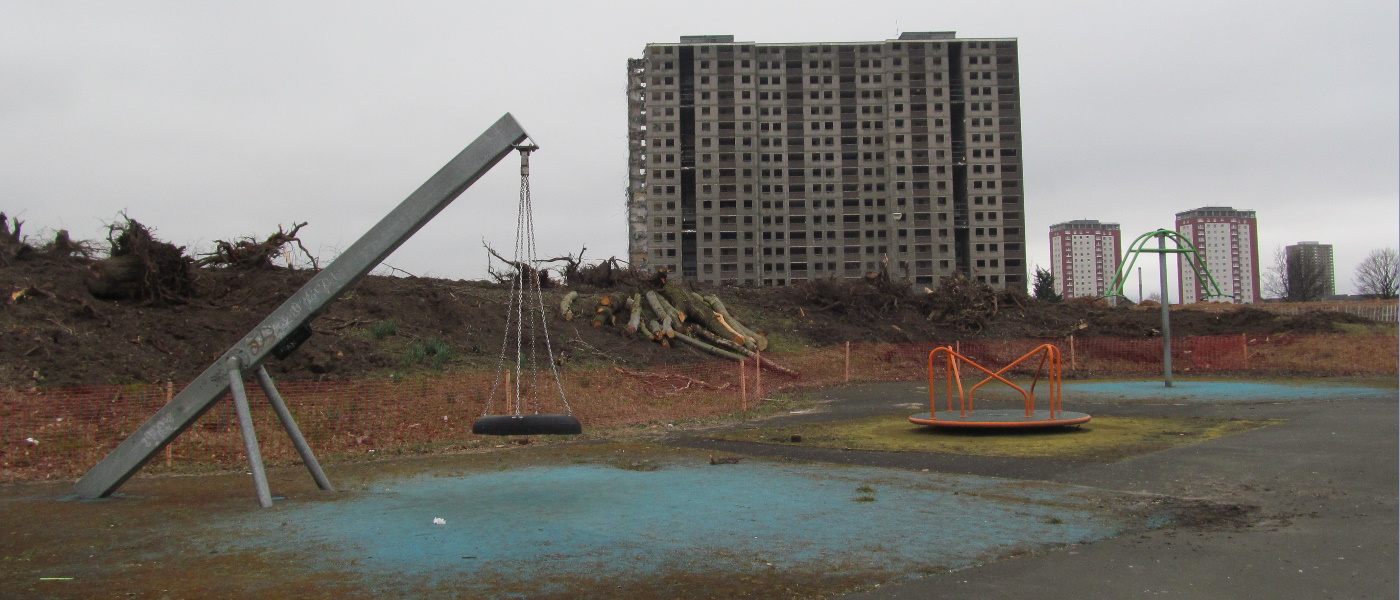Demolition (2016)

The demolition of Sighthill estate took place in slow motion between 2008 and 2016. The re-development of Sighthill was prompted by the decline in the urban fabric of the landscape. As Greg Michael of LTA design has said, this was “a strong community, let down by major road severance, poor amenities and low-quality housing built to last just 40 years. In the 1960s, its ten towers…were home to 7500 people. Fast-forward 20 years, and Sighthill experienced high levels of drug use and crime”. Demolition was accompanied by an extensive period of reclamation and de-pollution of the landscape – this was a place that was literally poisoned from the grass downwards, typified by the local nicknames, stinky pinky, the stinky lake. There was a visceral sulphurous power to the air during the razing of Sighthill, with the decontamination processes that followed a necessary chemical exorcism. Walking around Sighthill in the middle of this decade was to engage with the ghosts of former inhabitants, with shattered schools, rusting playground furniture and forgotten branding for Sighthill on fences and gates giving a sense of a failure of Ballardian proportions. Ballard’s 1975 novel High Rise tells of social breakdown and failure from within the walls of a multistorey housing complex, but here the causes of failure were almost wholly external and outwith the control of residents. Renewal sometimes has a downside, that of the thing that had to be renewed, something old and tired and no longer working.

